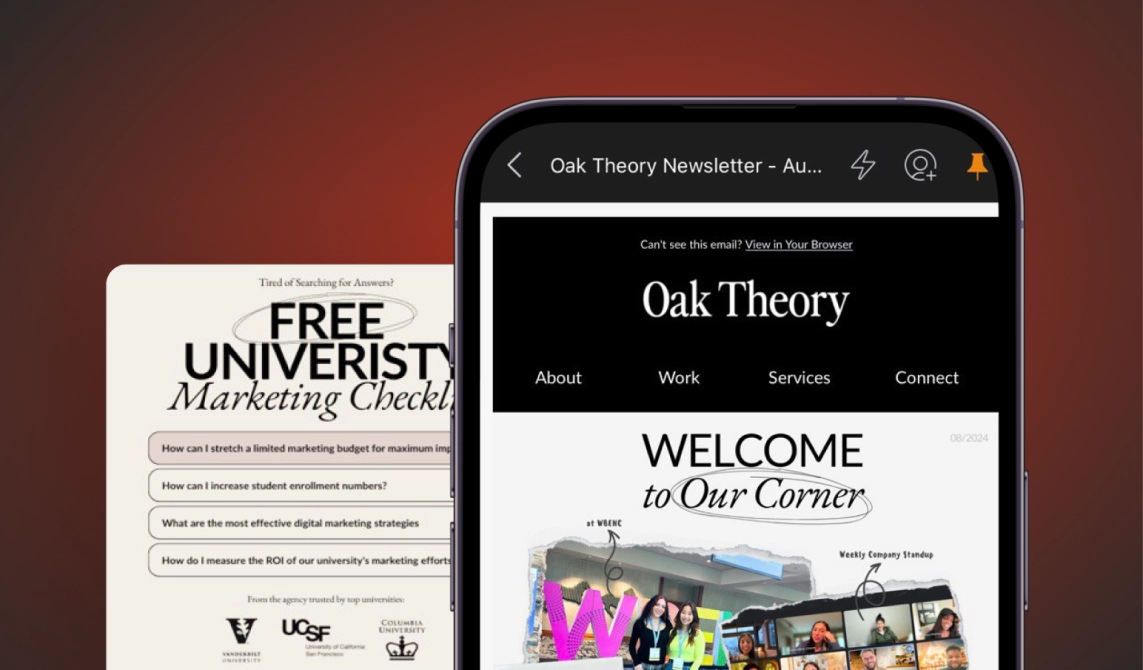The coronavirus pandemic has shifted many offices to an online workspace. Even once the pandemic is over, one in six workers employees “is projected to continue working from home or co-working at least two days a week.”
With this new reality on the horizon, it’s important to create a game plan moving forward. For many companies, the primary concern is maintaining an office culture and a collaborative work environment among employees. But with agencies, there’s the additional concern of working with clients remotely. Having launched our company during this pandemic, we’ve exclusively worked in a remote fashion with our clients. So, we’d like to share with you tips for communicating with your clients in a social-distanced world.
Build a Relationship From the Start
One perk of working remotely is that geographical distance is no longer a factor in client selection. With meetings now on Zoom, even companies in a different time zone are fair game. However, the online platform does make it difficult to build a relationship with the client. As MBO Partners shares on their blog, “if you never meet face-to-face it can be hard to get to know one another, which can lead to miscommunication down the road.”
The solution? Take time to properly build a relationship with your clients. Great business relationships are built upon personal relationships. When introducing your business, don’t forget to also introduce yourself. Feel free to share some fun facts or the story of how you ended up at your company.
Utilize Various Communication Tools
Online communication is a competitive market: from Zoom, to Google Hangouts, to Skype, there’s a vast range of options available. Ask your client which video conferencing platform they prefer for your meetings. Once they’ve made their decision, tour the outlet they chose. Have a test run with the various features to ensure smooth communication by the real thing. You might even want to test out which device to run the service on.
For Zoom users, here’s two tips from our co-founder Hannah: one, try using two devices for your meetings so that you don’t lose sight of your coworkers while switching screens.Two, use the same Zoom link for every meeting so that clients can easily jump on a call. Not all of your correspondence should be through the video medium. Quick messages should be reserved for messaging applications like Slack. Use your judgement as to when you should video chat with your clients, send them an email, or ping them a message. Virtual presentations differ from in-person addresses. The energy one has when presenting live is lost in translation with virtual modalities. So, consider using tools that have a “crisp layout with a strong call to action, simple color schemes, and diagrams and icons.” These engaging graphics will assist you in getting your point across.
- For Zoom users, here’s two tips from our co-founder Hannah: one, try using two devices for your meetings so that you don’t lose sight of your coworkers while switching screens. Two, use the same Zoom link for every meeting so that clients can easily jump on a call.
Not all of your correspondence should be through the video medium. Quick messages should be reserved for messaging applications like Slack. Use your judgement as to when you should video chat with your clients, send them an email, or ping them a message. Virtual presentations differ from in-person addresses.The energy one has when presenting live is lost in translation with virtual modalities.
So, consider using tools that have a “crisp layout with a strong call to action, simple color schemes, and diagrams and icons.” These engaging graphics will assist you in getting your point across.
Communicate in a Professional Manner
Dress to impress: or, at least from the waist up. Show your clients that even in unconventional times, your business-professional decorum remains steadfast. Plus, according to Baylor University, “dressing for work gets you mentally ready” for your upcoming meetings. In our blog post on turning your business into a brand, we reminded you that: “the old adage of ‘you are what you eat’ extends to every decision you exercise.” Thus, you are also what you wear and how you communicate. Save your 12 AM rants about the new Ben & Jerry’s ice cream flavor for your friends, not your clients. Also, try to avoid the abbreviated language associated with texting. Even if you’re messaging a client via Slack, replace ‘k’s with ‘okay’s and ‘ty’s with ‘thank you’s.
Utilize Various Communication Tools
Online communication is a competitive market: from Zoom, to Google Hangouts, to Skype, there’s a vast range of options available. Ask your client which video conferencing platform they prefer for your meetings. Once they’ve made their decision, tour the outlet they chose. Have a test run with the various features to ensure smooth communication by the real thing. You might even want to test out which device to run the service on. For Zoom users, here’s two tips from our co-founder Hannah: one, try using two devices for your meetings so that you don’t lose sight of your coworkers while switching screens.
Two, use the same Zoom link for every meeting so that clients can easily jump on a call. Not all of your correspondence should be through the video medium. Quick messages should be reserved for messaging applications like Slack. Use your judgement as to when you should video chat with your clients, send them an email, or ping them a message. Virtual presentations differ from in-person addresses. The energy one has when presenting live is lost in translation with virtual modalities. So, consider using tools that have a “crisp layout with a strong call to action, simple color schemes, and diagrams and icons.” These engaging graphics will assist you in getting your point across.

Comments
There are no comments yet.